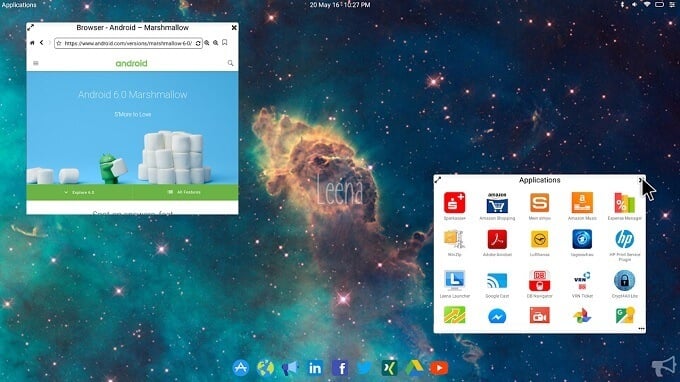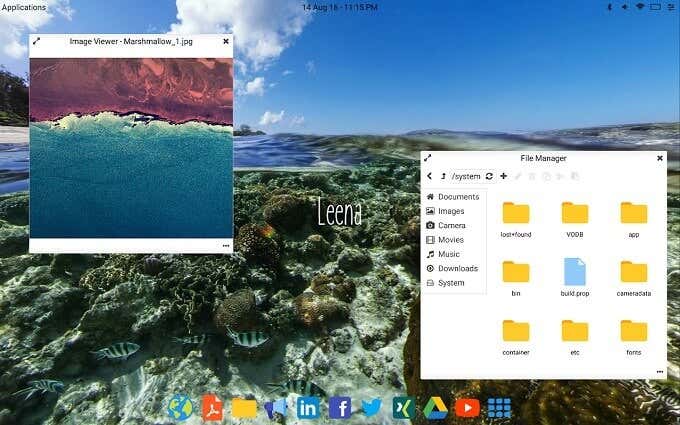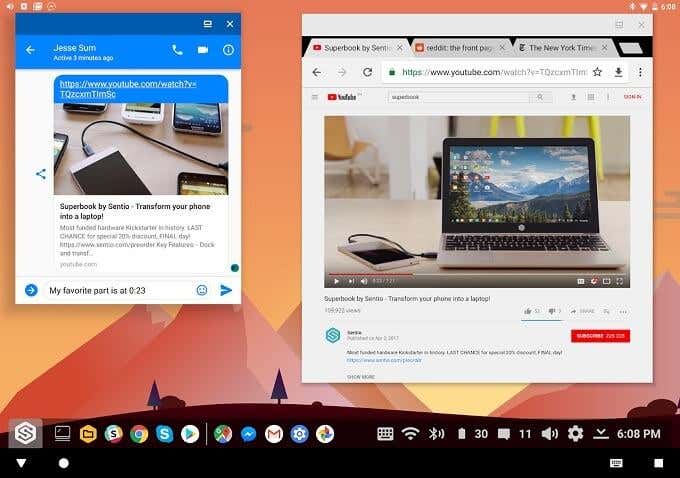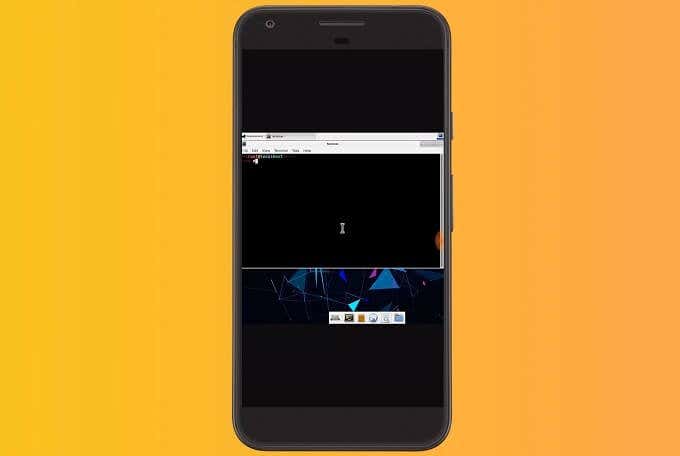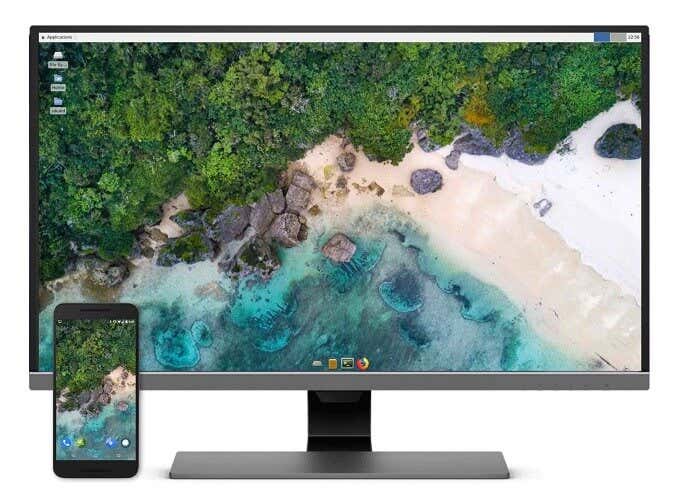There have been some attempts at creating a good desktop environment for Android phones. Samsung leads the way here with DeX. It’s exclusive to specific Samsung phones, but transforms your device into a full-fledged desktop machine when you plug it into a large monitor, DeX station or (in some models) another computer using the DeX desktop app.
Leena Desktop UI
Right now, Leena Desktop UI is still in beta form, but it already looks incredibly promising. Leena is in fact just an Android app, but it’s been cleverly written to provide you with much of the core functionality you’d get from a real desktop UI for your phone. The downside of Leena is that you can’t launch other apps and then run them within it. Instead you have to use the built in sub-apps. The upside of Leena is that you don’t have to root or otherwise modify your phone to use it. Simply download it as a regular app and use it. There’s a paid “pro” version of the software as well that adds more functionality, but for most people the basic free beta will already provide a quick way to move into a more comfortable workspace.
Sentio Desktop
Sentio Desktop offers a more feature-rich product than Leena at this point, but the company has gone beyond simply offering a desktop environment for Android. They also sell hardware that combines with the app to really turn your phone into a laptop. It’s called the Superbook and is basically a laptop with all the computer guts stripped out. Your phone mounts on the side of the Superbook and the app runs on the main screen. It’s very cool, though perhaps not ready to replace a laptop for most people. The good news is that you don’t have to buy Sentio hardware to make use of this app. You can simply connect any mouse, keyboard and external monitor to the setup and get the same experience. Sentio really seems to have thought it through when it comes to which desktop features are really important for day-to-day work. It allows for apps to be resized, resolution changes, multi-window apps and everything you’d generally expect from a Windows or Linux desktop UI, It also sports a traditional start menu, a taskbar with system tray and a notification center. As a whole, Sentio Desktop seems to be a real competitor to Samsung DeX, just without the hardware restriction. Then again, since Sentio will run on any Android device, stability will inevitably suffer. Looking through user reviews it seems that, while it runs perfectly for many, some users get crashes or other niggles on their particular handsets. Not that big a deal if you haven’t invested in the SuperBook hardware, so it is worth trying the app out before considering that. Sentio is certainly plenty ambitious and if you don’t have a DeX-capable phone, (or even if you do!) it’s certainly worth a try.
AndroNix
While Leena and Sentio offer a desktop front-end for your Android phone, AndroNix goes further by adding an entire extra operating system to your phone. Yes, this app allows you to run a Linux installation on your Android phone. That’s without the need for rooting, but it does take some elbow grease to get it all going. Andronix is really more a collection of step-wise scripts that you copy into a terminal app. The instructions are clear and there’s plenty of documentation, but they’ve had to work around the limitations of Android here. For example, you access your Linux instance by using VNC, a remote desktop client. It’s a kludge that works just fine, but it’s a kludge nonetheless. AndroNix does have an amazing community, lots of documentation and developers who really seem to be on the ball with support requests. The paid-for premium version comes with dedicated support as well, which might matter to you if this becomes a mission-critical application. It is definitely not for everyone, but incredibly impressive nonetheless.
Maru OS
The first thing you should know about Maru OS is that it only works on a very small number of devices right now. These aren’t even particularly popular phone models, so chances are you don’t have one of these. However, Maru is worth bookmarking and keeping an eye on. It’s a gorgeous, lightweight operating system for smartphones. Yes, MaruOS actually replaces the entire operating system, it isn’t an OS within and OS or simply an app with a desktop UI. It’s based on Android Oreo and seamlessly shifts from being a mobile OS to being a desktop one. These are the devices you can load MaruOS on at the time of writing:
Nexus 6P (angler)Nexus 5X (bullhead)Nexus 5 (hammerhead)Pixel (Sailfish)Samsung S9+ (star2LTE)
Pay attention to the internal condenames here. For example, “star2LTE” refers to the Exynos-equipped S9+ phones. So not every S9+ will work. MaruOS represents an extreme approach to getting your phone to work as a desktop, but it might also be the most reliable and elegant way to do it. For most of us, this is just a curiosity right now, but hopefully something like MaruOS will become the norm for all Android devices at some point in the future.
Your Phone Is Your Computer!
With flagship Android phones now packing as much processing power as a typical work laptop, it seems a shame to waste it all on Instagram and Twitter browsing. With these apps you can put that grunt to good use and perhaps even leave that laptop at home as you move from one monitor to the next. Even if you only ever use the desktop option in a pinch, it’s never a bad thing to have options!
